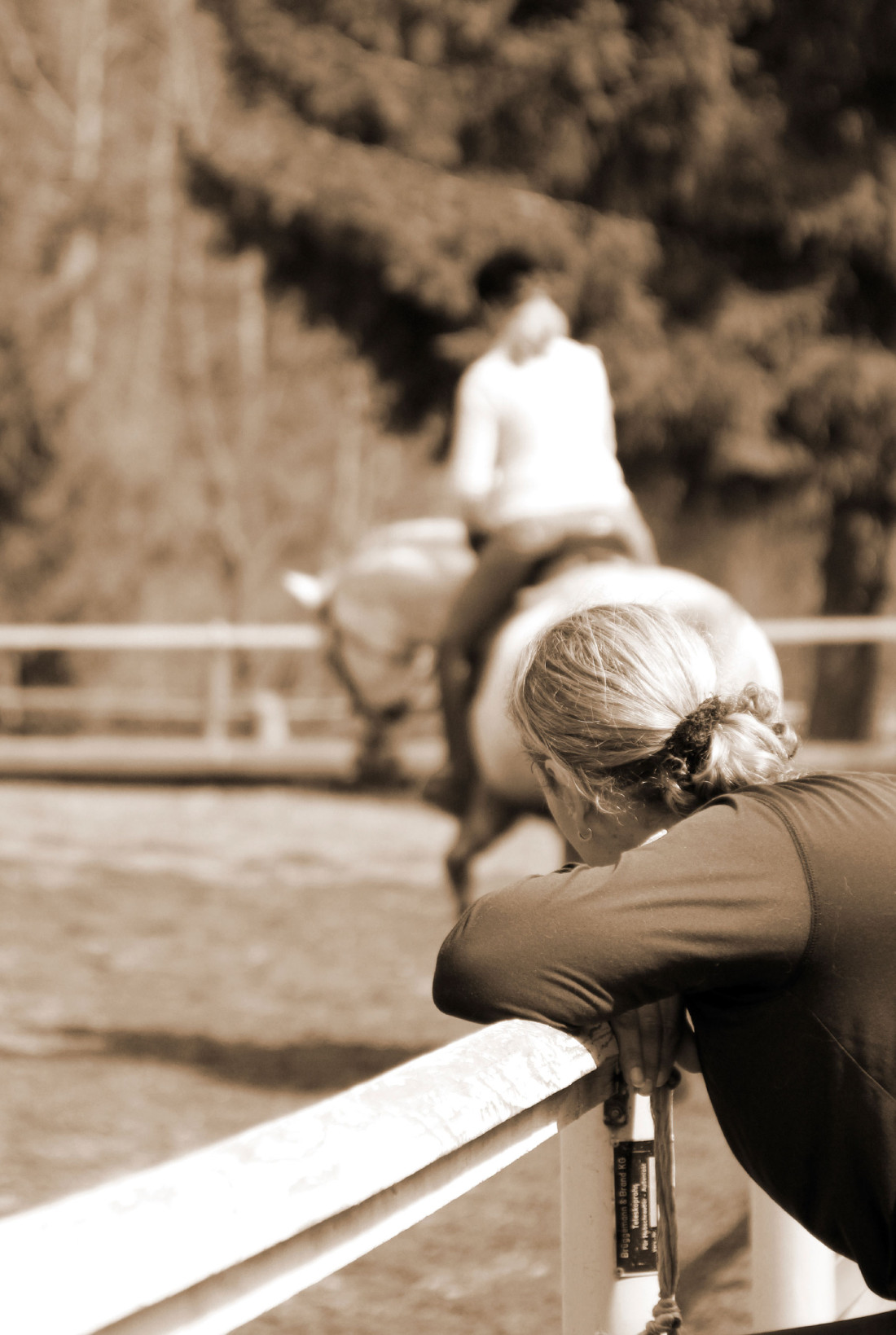
Protecting Your Equine Business: The Truth About Liability Releases
 Many equestrian facilities require their clients to sign liability release forms prior to engaging in any equine-related activities. Liability releases, also known as waivers and hold harmless agreements, are meant to protect the facility from liability in the event of an accident. But despite the extensive use of liability releases, there exists widespread skepticism as to their effectiveness. In fact, many have even declared the liability release to be “not worth the paper they’re written on.” So then, do you really need to ask your clients to sign a liability release? In one word, yes. All businesses engaged in equine-related services should require that their clients, guests, and spectators sign a properly drafted liability release.
Many equestrian facilities require their clients to sign liability release forms prior to engaging in any equine-related activities. Liability releases, also known as waivers and hold harmless agreements, are meant to protect the facility from liability in the event of an accident. But despite the extensive use of liability releases, there exists widespread skepticism as to their effectiveness. In fact, many have even declared the liability release to be “not worth the paper they’re written on.” So then, do you really need to ask your clients to sign a liability release? In one word, yes. All businesses engaged in equine-related services should require that their clients, guests, and spectators sign a properly drafted liability release.
Why do I Need a Liability Release?
Engaging in horse-related activities can be a risky business. As we discussed in a prior article, most states have enacted equine activity statutes to protect equine professionals and activity sponsors from liability for injuries or death to participants resulting from certain horse-related activities. In some states that have yet to adopt an equine activity statute, such as New York and California, a legal defense called “assumption of the risk” offers horse owners and professionals some protection from unavoidable accidents. Nevertheless, although these statutes and defenses are extremely helpful to horse owners and professionals, limitations exist in both, and it could prove to be a costly mistake to rely exclusively on them.
 Liability releases can afford additional protection to horse owners and professionals. They can serve two very important functions. First, they can provide a strong defense in the unfortunate event of a lawsuit. In fact, when properly drafted and in compliance with state law, liability releases often result in complete dismissal of the lawsuit. Liability releases can also assist in an early, favorable resolution of a dispute. Second, liability releases may discourage someone from filing a lawsuit in the first place (especially the contingency fee attorney, who is hesitant to commence a lawsuit where a strong defense exists). It is important to recognize, however, that liability releases are not a complete bar to a lawsuit — a lawsuit can be filed even in the face of a valid, enforceable liability release. The liability release will come into play after the lawsuit has been commenced, and if enforceable, will provide a strong defense.
Liability releases can afford additional protection to horse owners and professionals. They can serve two very important functions. First, they can provide a strong defense in the unfortunate event of a lawsuit. In fact, when properly drafted and in compliance with state law, liability releases often result in complete dismissal of the lawsuit. Liability releases can also assist in an early, favorable resolution of a dispute. Second, liability releases may discourage someone from filing a lawsuit in the first place (especially the contingency fee attorney, who is hesitant to commence a lawsuit where a strong defense exists). It is important to recognize, however, that liability releases are not a complete bar to a lawsuit — a lawsuit can be filed even in the face of a valid, enforceable liability release. The liability release will come into play after the lawsuit has been commenced, and if enforceable, will provide a strong defense.
But not all releases are valid. The enforceability of a liability release depends largely on the language of the release and its compliance with state law. The legal requirements vary from state to state, and failure to comply with your state’s law may render your liability release unenforceable. This is extremely important to keep in mind, as many liability releases are obtained from a friend or downloaded off the Internet. These generic liability releases are problematic because they may contain broad, sweeping language that is not specific to the participant or the equine facility, and that is not in compliance with your state’s law. These form documents are typically found unenforceable by the courts.
So What Makes a Liability Release Enforceable?
The enforceability of a liability release hinges on its specific terms and language — the more specific, the better. A liability release should thoroughly inform the participant of the inherent risks related to equine activities. A generic statement such as “horseback riding can be dangerous” does not sufficiently spell out the risks. The liability release should include an explanation as to why horseback riding can be dangerous. A good starting point for this language may be your state’s equine activity statute, which likely defines the inherent risks.
 A liability release must comply with your state’s laws. It is important to remember that each state has different requirements. You should be familiar with your state’s equine activity statute, as many of these statutes require that specific language be included in contracts or liability releases. For example, Ohio’s statute requires that a valid liability release be in writing, signed by the participant or legal guardian, and that it specify each inherent risk of an equine activity listed in the statute. Many other states’ statutes have a similar requirement. In addition, a liability release must clearly inform the participant that he or she intends to relieve the equine facility from liability for negligence. Absent specific language disclaiming negligence, the liability release is unlikely to protect you from liability resulting from negligent conduct (i.e., providing unsafe equipment).
A liability release must comply with your state’s laws. It is important to remember that each state has different requirements. You should be familiar with your state’s equine activity statute, as many of these statutes require that specific language be included in contracts or liability releases. For example, Ohio’s statute requires that a valid liability release be in writing, signed by the participant or legal guardian, and that it specify each inherent risk of an equine activity listed in the statute. Many other states’ statutes have a similar requirement. In addition, a liability release must clearly inform the participant that he or she intends to relieve the equine facility from liability for negligence. Absent specific language disclaiming negligence, the liability release is unlikely to protect you from liability resulting from negligent conduct (i.e., providing unsafe equipment).
Finally, it is important that the liability release cover the proper parties. A liability release should specify all parties being released, including the business entity and its owners, employees, and independent contractors. It is equally important that the proper parties sign the liability release. A person signing a liability release can only sign away his or her own rights. Thus, it is necessary that family members, guests, and spectators sign liability releases as well. Children, however, cannot sign away their legal rights. It is important to have a parent or guardian sign a liability release, but that merely releases the parents’ own right to sue, not their child’s right. For that reason, you may also want to consider including an indemnification provision in your release, which would obligate the person signing the release to cover your legal costs in the event that someone sues you.
In conclusion, properly drafted liability releases can offer a powerful defense for equine owners and professionals. Consequently, liability releases should be considered to protect yourself and your equine business, but it is essential that a knowledgeable attorney carefully scrutinize your liability release to ensure compliance with state laws and optimal protection from liability.
